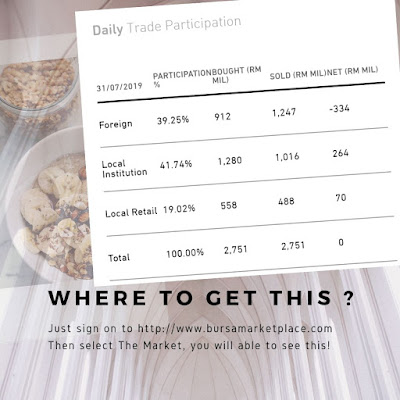Financial Report: Balance Sheet
Next, we would like to know how much asset in the company. In this case, we need to study the second report, Balance Sheet. The name "Balance" because the report is prepared in such a way that, Asset is equal to Liability. When investor bring in $100k, from the company point of view, it's similar to borrow the money from the bank, hence record under the liability side. If the company use the fund to buy goods or equipment, the figure will record under "Asset" side as well. So the formula now become, Asset = Liability.
The left side is Asset (borrower) which represent where the money go to and the right side is Liability (Lender) which represent where the source of fund come from. That's why, when the investor bring money to invest in a company, it's similar to company borrow the money from investor and the company do not have the obligation to return you the money. (unless they do a capital repayment)
Taking the total Asset minus total Liability, we will have the net worth of the company. The net worth of the company sometime also know as "book value" or "share holders' equity".
Another area we need to know is inventories or goods. Technically, the increase of inventories should be same pace as sales. Red flag: If inventories rise faster than sales, something is not quite right. Just imagine if Apple production line produce 10 billion of iPhone6 and put in stock room, this figure will record here. However, one year later, if nobody want to use iPhone anymore, all the inventories will become worthless!
Next is Account Receivable, we can know how much the company give credit to it's customer and how long the collected period.
Red flag: If Account Receivable increase in much faster pace than sales, something could be wrong! In the past, many company cook the book, sell something but not receive the payment and keep accumulated in account receivable, which create false signal that the sales and revenue of company is very good!
Prepaid expenses or payment in advance, if any figure, is sign that the goods sell like hot cake, meaning customers willing to pay in advance. This could mean the company's products are in good demand and having competitive advantage.
.
The left side is Asset (borrower) which represent where the money go to and the right side is Liability (Lender) which represent where the source of fund come from. That's why, when the investor bring money to invest in a company, it's similar to company borrow the money from investor and the company do not have the obligation to return you the money. (unless they do a capital repayment)
Taking the total Asset minus total Liability, we will have the net worth of the company. The net worth of the company sometime also know as "book value" or "share holders' equity".
Asset = Liability + Equity
By knowing the Asset and liability, we can always calculate Return on Asset (ROA) and Return on Equity (ROE). If ROE > ROA, means the company borrow money.Another area we need to know is inventories or goods. Technically, the increase of inventories should be same pace as sales. Red flag: If inventories rise faster than sales, something is not quite right. Just imagine if Apple production line produce 10 billion of iPhone6 and put in stock room, this figure will record here. However, one year later, if nobody want to use iPhone anymore, all the inventories will become worthless!
Next is Account Receivable, we can know how much the company give credit to it's customer and how long the collected period.
Red flag: If Account Receivable increase in much faster pace than sales, something could be wrong! In the past, many company cook the book, sell something but not receive the payment and keep accumulated in account receivable, which create false signal that the sales and revenue of company is very good!
Prepaid expenses or payment in advance, if any figure, is sign that the goods sell like hot cake, meaning customers willing to pay in advance. This could mean the company's products are in good demand and having competitive advantage.
.



Comments
Post a Comment